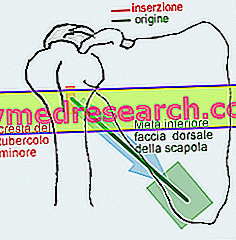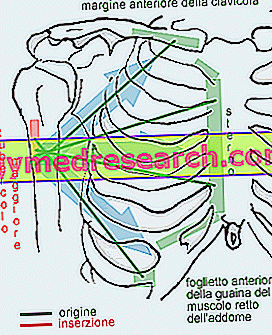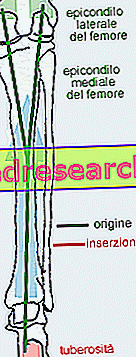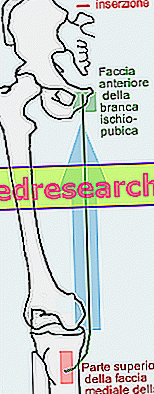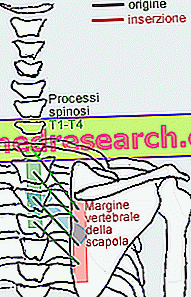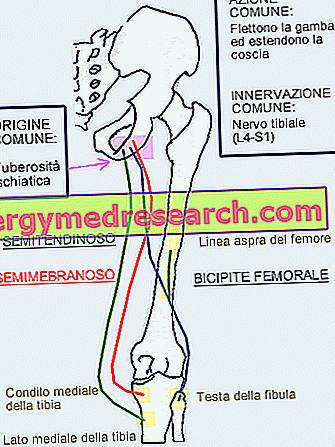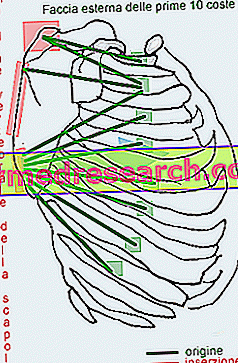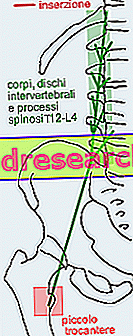Generality The hypothalamus is the important structure of the encephalon which takes place just below the thalamus and which directs the activity of the pituitary gland, a major endocrine gland that is fundamental to the life and well-being of the human being. Of the size of a pea, the hypothalamus is a concentrate of nerve nuclei, which can be divided into three regions (anterior, median and posterior), which are in turn divisible into areas
Category anatomy
The large round muscle originates from the lower part of the lateral dorsal margin of the scapula. It is inserted on the crest of the small tuberosity of the humerus (also called minor tubercle or bicipital groove). It is related to the large dorsal, with the long head of the triceps, with the subscapularis and with the coracobrachialis muscle
The gluteus maximus muscle is the most superficial and developed of the muscles of the gluteal region (66 cm 2 of section). It is covered by the superficial gluteal fascia and in an upright position it covers the ischial tuberosity (while in the sitting position it leaves it free). In relation to its origin two parts can be distinguished, one superficial and one deep
The pectoralis major muscle is a superficial thorax muscle that takes on a quadrangular shape when the arm is hanging and a triangular shape when the arm is completely flexed. It can be divided into three parts: clavicular, sternocostal and abdominal The clavicular part originates from the 2/3 medial of the anterior margin of the clavicle
The gastrocnemius muscle is the most superficial of the muscles of the posterior region of the leg. It is formed by two muscular bellies called twins. The medial head originates above the medial epicondyle of the femur, from the popliteal plane, and from the posterior region of the knee joint capsule
The large dorsal is the largest muscle in the human body and covers its lower and lateral sides with its bundles. Its large size allows the muscle to be divided into four different parts: vertebral, iliac, costal and scapular. The vertebral part originates through the posterior leaflet from the lumbodorsal fascia and from the spinous processes of the last 6 thoracic vertebrae; the iliac part originates from the anterior third of the iliac crest; the costal part originates from the 10th to the 12th coast; the scapular part originates from the lower corner of the lateral margin of the scapula
The gracilis muscle is a biarticular, flattened and ribbon-like muscle that occupies the medial portion of the thigh. It is covered by the femoral fascia and is placed deeper than the long and large adductor muscles. It originates near the pubic symphysis at the anterior aspect of the ischiopubic branch
The large rhomboid muscle is located in the upper part of the back and is covered by the trapezius muscle; it originates from the spinous processes of the 1st-4th thoracic vertebra and is inserted at the vertebral margin of the scapula below the spine. It has the same function as the small rhomboid muscle: it makes the scapula adhere closely to the chest, elevates it, rotates it internally and gives it
Click on the name of the muscles to learn more about their anatomical features Upper limb Lower limb Trunk Abdomen Articles
The serratus anterior muscle, or large dentate, is located in the lateral wall of the thorax. It originates with 9-10 digits from the outer face of the first 10 ribs. It is inserted from the upper corner to the lower corner of the vertebral margin of the scapula and due to this long it is commonly divided into three parts: an upper part that originates from the first 10 ribs and is inserted at the upper scapular angle; an intermediate part which originates from the 2nd to the 4th ribs and is inserted along the medial margin of the scapula; an inferior one that originates from the 5th to the 9th
The large psoas muscle is divided into a superficial part and a deep part. It is located in front of the square muscle of the loins. The superficial part originates from the lateral faces of the bodies of the last thoracic vertebra (T12) and of the first four lumbar vertebrae (L1-L4) and from the intervertebral discs interposed


